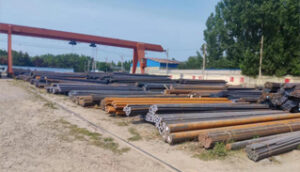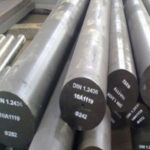Tool Steel for Hand Tools: Balance Between Toughness and Hardness
Introduction
Tool steels comprise a versatile range of steel alloys optimized for fabricating machining tools and durable components. For hand tools like pliers, wrenches, hammers, and screwdrivers, selecting the appropriate tool steel grade involves balancing hardness for wear resistance against fracture toughness to withstand applied loads without breaking.
This article explores the performance demands of hand tool applications and how tool steel selection, heat treatment, and surface enhancements can strike the optimal compromise between hardness and toughness. With the right materials and processing, tool steels enable maximized hand tool longevity and reliability even under abusive use.
Challenging Needs of Hand Tools
 Hand tools must endure:
Hand tools must endure:
- Repeated impact loads and stresses
- Prolonged friction and abrasive wear
- Concentrated forces on cutting edges or tips
- Damage from accidental tool abuse or excessive loads
- Corrosion from workplace environments or outdoor use
- Deformation like bending or dulling with use
- Fatigue cracking from cyclical stresses
These demanding conditions require a tool steel with the right balance of properties.
Key Hand Tool Steel Performance Requirements
To withstand hand tool service conditions, critical performance needs include:
Toughness
Sufficient fracture toughness prevents brittle failures under sudden impact or overload stresses that commonly occur during hand tool use.
Strength
High yield and ultimate tensile strengths resist permanent deformation when tightly gripping or resisting applied loads.
Hardness
Adequate hardness (typical range HRC 50-58) provides necessary wear resistance at cutting edges, jaws, or contact regions without being excessively brittle.
Fatigue Strength
Resistance to progressive fatigue crack growth induced by fluctuating stresses and strains encountered over thousands of use cycles.
Corrosion Resistance
Suitable corrosion protection maintains appearance and performance despite workplace exposure to moisture or chemicals for hand tools used in trades applications.
Dimensional Stability
The ability to retain shape and critical clearances/tolerances despite rough handling and abuse to avoid failure or performance loss over time.
Cost Effectiveness
As a high production item, hand tool steel selection considers cost constraints and machinability/grindability factors that impact manufacturing.
With the optimal balance, tool steels satisfy hand tool demands.
Leading Tool Steel Grades for Hand Tools
Popular tool steel candidates include:
Chrome-Vanadium Alloys
Tough, strong, and highly fatigue and wear resistant chrome-vanadium grades like 4140, 4142, and 4340 used for sockets, wrenches, striking tools and torque adapters.
Manganese-Chrome-Molybdenum Alloys
Similar to chrome-vanadium but with added molybdenum for further enhanced toughness and ductility. Used for pliers, cutting tools, and impact devices.
Oil Hardening Cold Work Steels
Easy to machine alloys like O1 and D2 that polish well and respond to shallow case hardening suited for non-impact everyday use hand tools.
M-Series Tungsten High Speed Steels
The ultimate in hardness and wear resistance but costlier and more brittle. Used where maximum abrasion resistance and edge retention are needed.
400-Series Stainless Steels
Corrosion resistant stainless grades like 420 and 440C when wear resistance must be balanced with outdoor use demands for garden or trade tools.
Choosing the right balance of toughness vs. hardness and cost enables optimized hand tool performance.
Heat Treating Refinements
Proper heat treatment of tool steels for hand tools involves:
Normalizing
Normalizing relieves residual stresses from prior machining or grinding while homogenizing the microstructure. This minimizes distortion during subsequent hardening.
Austenitizing
Thorough austenitizing dissolves all carbides for complete transformation necessary to achieve full hardness in higher carbon tool steel grades.
Quench Process Control
The quench rate and severity dictates final hardness. Quenching is optimized to maximize hardness without excessively embrittling the steel.
Tempering
Relatively low tempering following hardening restores needed fracture toughness and ductility. Multiple draws maximize uniformity.
Selective Hardening
Case hardening via carburizing or nitriding provides surface wear resistance while maintaining a tough core.
Cryogenic Processing
Optionally, sub-zero treatment after tempering further refines the carbide distribution to boost wear properties.
Effective heat treatment balances the desired hardness and toughness.
Critical Surface Enhancements
 Surface engineering processes further enhance tool steel hand tool performance:
Surface engineering processes further enhance tool steel hand tool performance:
Nitriding
Diffusion nitriding creates a thin (<0.001”), exceptionally hard surface layer on hand tools that improves wear and contact stress resistance.
Thin PVD Coatings
Dense, fine-grained PVD coatings like TiCN or chromium nitride maximize hardness and lubricity of surface contact regions without compromising fatigue strength.
Electroplating
Thin decorative or functional chromium plate, nickel, and molybdenum coatings improve appearance, corrosion resistance, wear protection, and electrical conductivity.
Resistance Welding
Localized resistance welding allows durable cutting edges of high speed steel to be bonded onto carbon steel hand tool bodies where maximum abrasion resistance is needed.
Laser Engraving
Laser etching enables clear permanent logo marking of hand tools for easy identification. Marks can also subtly enhance surface texture for improved grip and contact.
Combined with optimal substrate preparation, coatings and treatments transform hand tool steel performance while adding unique branding capabilities.
Conclusion
The challenging demands of hand tool applications require careful tool steel selection along with tailored heat treating, processing, and surface enhancements that strike the right balance between hardness, wear resistance, and fracture toughness. When skillfully engineered, tool steels enable hand tools that maintain cutting sharpness, avoid deformation, and withstand repeated abuse over thousands of use cycles without premature failure or excessive maintenance. With continued material and processing improvements, tool steels will go on providing the backbones of rugged, reliable hand tools used in trades, hobbies, and households worldwide.
Frequently Asked Questions
What hardness range do most hand tool steels require?
A surface hardness between approximately HRC 50-58 satisfies the wear resistance desired for most manual hand tool applications while avoiding being excessively brittle when impacted or overloaded.
What causes hand tools to permanently deform during use?
Insufficient yield and tensile strengths lead to plastic deformation under applied loads. Selecting a properly heat treated higher carbon or alloy tool steel prevents excessive deformation issues.
How does alloy composition affect hand tool steel fracture toughness?
Elements like manganese, chromium, molybdenum, and nickel in sufficient concentrations improve fracture toughness and ductility to resist brittle failures when force is applied.
Why is carbon content kept relatively low for tool steels used in hand tools?
High carbon tool steel grades tend to be hard and wear resistant but more prone to sudden brittle fractures under point loading. Limiting carbon to ~0.4-0.6% balances properties.
What fabrication processes help shape tool steels into hand tools?
Stamping, machining, and grinding form tool steel blanks. Heat treating and selective surface enhancement processes then optimize properties and performance.
How does cryogenic treatment enhance hand tool performance?
Deep cryo processing following tempering transforms retained austenite to martensite and refines carbides. This boosts hardness, strength, and abrasion resistance.
What quality checks are performed on finished tool steel hand tools?
Rockwell hardness testing, functional load testing, salt spray corrosion testing, magnetic particle inspection, and dimensional tolerances are commonly evaluated.
How could metal 3D printing be applied to produce hand tool components?
Binder jet printing and laser powder bed fusion could enable lightweight, topologically optimized tool steel handles, joints, and other assemblies with tuned properties.
What recent hand tool steel innovations appear promising?
Powder metallurgy alloys, nanostructured grains, and laser surface texturing offer potential leaps forward in wear resistance, hardness, and grip performance as 3D printing also provides design flexibility.
How could smart hand tools be enabled using tool steels?
Integrating sensor systems and communication electronics into tool steel handles and attachments could provide connected capabilities for tracking, feedback, and performance optimization.

